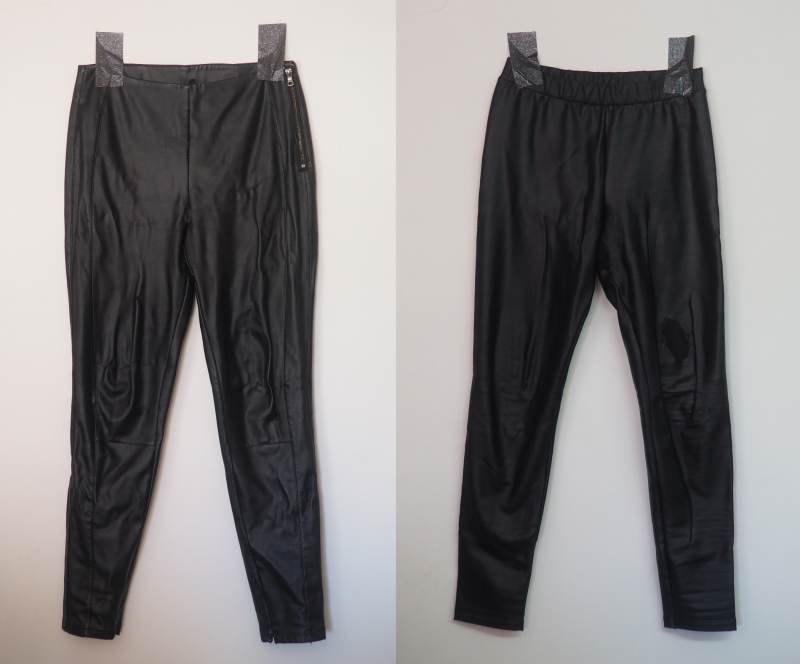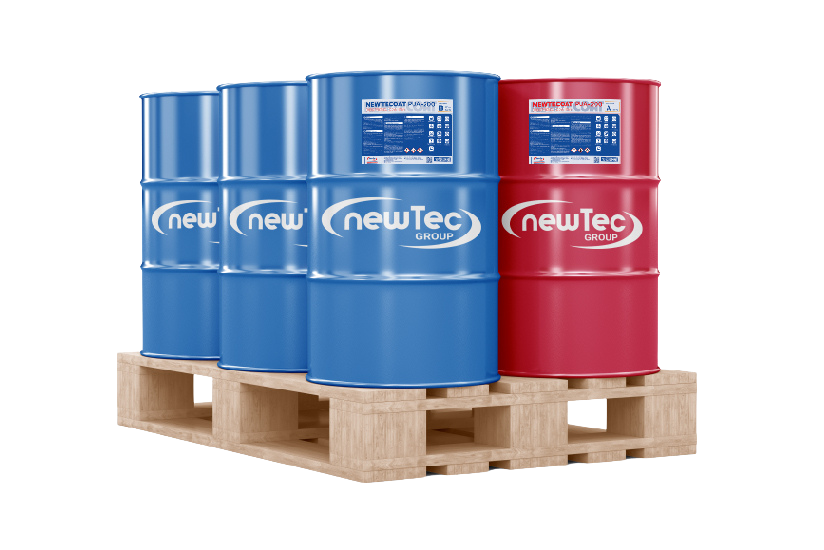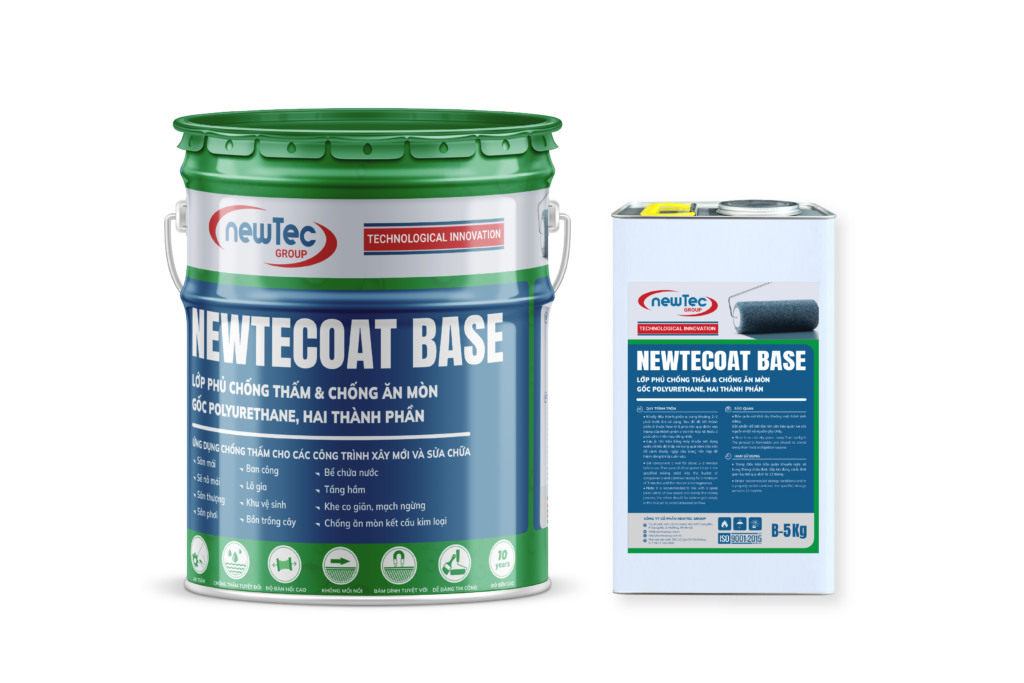Polyurethane is everywhere, even if you don’t realize it. From the seats in your car to the foam in your mattress, this versatile material is a big part of our daily lives. But where exactly is polyurethane found, and what makes it so useful? In this guide, NewTec Group will explore the many places you’ll find polyurethane, touching on its role in industries like automotive, home furnishings, construction, and even fashion. We’ll also look at its environmental impact and the challenges of recycling. So, let’s take a closer look at where polyurethane pops up in our world.
Key Takeaways
- Polyurethane is a key material in car interiors, insulation, and coatings, making vehicles more comfortable and efficient.
- In-home furnishings, polyurethane is used for cushioning, mattresses, and durable furniture designs.
- The construction industry relies on polyurethane for insulation, sealants, adhesives, and flooring solutions.
- Polyurethane plays a significant role in fashion, especially in synthetic leather, sportswear, and footwear.
- Recycling polyurethane is challenging, but there are ongoing innovations to make it more sustainable.
Understanding Polyurethane: Composition and Characteristics
Chemical Structure of Polyurethane
Polyurethane, often referred to as PU, is quite fascinating in its chemical makeup. At its core, it’s created by reacting diisocyanates with polyols or diamines. This reaction forms a polymer chain that gives polyurethane its unique properties. One of the reasons polyurethane is so versatile is because of the flexible polyol macro-chains. These chains have low glass transition temperatures, which means they stay flexible even when it’s cold. This characteristic is crucial in applications where flexibility is needed in varying temperatures.
Source: BYJU’S
Physical Properties of Polyurethane
Polyurethane is known for its durability and flexibility, but there’s more to it than that. It can be produced in a range of hardness levels, from soft and cushiony to rigid and tough. This adaptability makes it suitable for a wide variety of uses.
- Flexibility: Maintains performance in both hot and cold conditions.
- Durability: Resistant to abrasion and wear, which is why it’s often used in high-traffic areas.
- Versatility: Can be molded into different shapes and sizes, making it a favorite in manufacturing.
Types of Polyurethane Products
Polyurethane comes in several forms, each tailored for specific applications. You’ve got flexible foams, which are typically used in furniture and bedding. Then there are rigid foams, often found in insulation panels due to their excellent thermal properties. Thermoplastic polyurethanes are another type, used in everything from automotive parts to footwear.
Polyurethane’s adaptability is what makes it a staple in so many industries today. Its ability to change form and function is like having a Swiss Army knife in the world of materials.
Polyurethane in the Automotive Industry
Applications in Car Interiors
Polyurethane is widely used in car interiors, providing comfort and style. It’s found in seats, armrests, and headrests, offering cushioning and support. Its flexibility and durability make it perfect for these applications. The material is also used in car dashboards and door panels, where it helps in noise reduction and provides a premium feel.

Role in Vehicle Insulation
In the automotive world, insulation is key for both comfort and efficiency. Polyurethane plays a crucial role in insulating vehicles, helping to maintain internal temperatures and reduce noise. This not only improves passenger comfort but also enhances fuel efficiency by reducing the need for heating and cooling systems.
Use in Automotive Coatings
Polyurethane coatings are used to protect car exteriors from the elements. These coatings offer excellent resistance to scratches and UV rays, ensuring the vehicle maintains its appearance over time. Additionally, they provide a glossy finish that enhances the car’s aesthetic appeal.
Polyurethane’s versatility makes it a staple in the automotive industry, from enhancing comfort in car interiors to protecting exteriors with durable coatings.
- Polyurethane enhances car seats and interiors with comfort and durability.
- It plays a vital role in vehicle insulation, improving energy efficiency.
- Automotive coatings made from polyurethane protect and beautify car exteriors.
For more on how custom molded polyurethane is transforming automotive performance, particularly in seals and gaskets, check out the latest advancements in automotive components.
Polyurethane in Home Furnishings
Cushioning and Upholstery
Polyurethane foam is a popular choice when it comes to cushioning and upholstery in home furnishings. It’s not just about comfort; polyurethane offers durability and resilience, making it ideal for sofas, chairs, and other seating options. The foam is light, easy to shape, and provides excellent support, which is why it’s so widely used. Plus, it holds up well over time, maintaining its shape and support even after years of use.
- Provides excellent cushioning and support
- Lightweight and easy to shape
- Maintains shape over time
Polyurethane in Mattresses
When it comes to mattresses, polyurethane foam is a key player. It offers a balance between softness and support, making for a comfortable sleep surface. Different densities of foam can be used to create layers, each contributing to the overall comfort and support of the mattress. It’s also known for its ability to reduce pressure points, which can lead to more restful sleep.
Many people are concerned about the safety of polyurethane foam in mattresses. It’s important to understand the potential toxicity and safety of the materials used in your home furnishings.
Durability in Furniture Design
In terms of durability, polyurethane is hard to beat. It’s resistant to wear and tear, which means furniture made with polyurethane components can last for many years. This makes it a cost-effective choice for both manufacturers and consumers. Additionally, polyurethane can be molded into various shapes and finishes, allowing for creative and flexible furniture designs.
- Resistant to wear and tear
- Cost-effective for long-term use
- Allows for creative furniture designs
Construction and Building Materials Featuring Polyurethane
Insulation and Energy Efficiency
Polyurethane is a big player when it comes to keeping buildings warm or cool. Its insulation properties are top-notch, making it a favorite for energy-efficient construction. You might find it in the form of rigid foam panels or spray foam. These materials help keep the heat in during winter and out during summer, which can cut down on energy bills. Here’s a quick look at some of its uses in insulation:
- Rigid foam panels for walls and roofs
- Spray foam for sealing gaps and cracks
- Insulating concrete forms (ICFs)

Application of Polyurethane in Building and Construction
Polyurethane in Sealants and Adhesives
When it comes to sticking things together, polyurethane sealants and adhesives are often the go-to choice. They are flexible, durable, and can handle all sorts of weather. Whether you’re sealing windows or bonding different materials, polyurethane does the job well. It’s commonly used in:
- Window seals
- Flooring adhesives
- Joint fillers
Role in Flooring Solutions
Polyurethane is also used in flooring, providing a tough and durable surface. It’s often found in coatings that protect floors from wear and tear. Plus, it’s resistant to chemicals and moisture, making it ideal for industrial settings. Some benefits of polyurethane flooring include:
- Long-lasting finish
- Easy to clean
- Resistant to scratches and stains
Polyurethane’s versatility in construction materials is undeniable. From keeping homes cozy to ensuring floors withstand heavy use, its role is significant.
For those interested in sustainable building materials, PU pavement offers various advantages like effective drainage and noise reduction, making it a smart choice for eco-friendly projects.
Polyurethane in the Fashion and Textile Industry
Use in Synthetic Leather
Polyurethane has a big role in making synthetic leather, which is often used in fashion. This material is cheaper and more animal-friendly than real leather. It’s used for making jackets, bags, and shoes. The look and feel can be surprisingly close to the real thing, which is why it’s popular.
- Cost-effective: Cheaper than genuine leather.
- Animal-friendly: No animals are harmed in the process.
- Versatile: Can be made to look like different types of leather.

Polyurethane has a big role in making synthetic leather
Applications in Sportswear
In sportswear, polyurethane is a game-changer. It’s used for coatings that make clothes waterproof and breathable at the same time. This is great for athletes who need to stay dry but don’t want to overheat. Polyurethane also helps make clothes stretchy, which is perfect for activewear.
- Waterproof coatings: Keeps athletes dry.
- Breathable: Allows sweat to evaporate.
- Stretchy: Provides flexibility for movement.
Polyurethane in Footwear
Polyurethane is a key material in making shoes. It’s used in soles because it’s lightweight and durable. This means shoes are comfortable and last longer. Plus, polyurethane can be molded into different shapes, which helps in designing various styles of shoes.
- Lightweight: Makes shoes easy to wear.
- Durable: Shoes last longer with less wear and tear.
- Moldable: Allows for creative shoe designs.
Polyurethane’s adaptability makes it a favorite in the fashion industry. It offers solutions that are both practical and stylish, meeting the needs of consumers who want both form and function.
For those interested in more technical applications, TPU is another form of polyurethane used in fashion and manufacturing, known for its versatility in packaging and textile coatings.
Polyurethane in Electronics and Appliances
Polyurethane plays a big role in making our electronics and appliances work better and last longer. It’s not just about looking good; it’s about protection and efficiency.
Protective Coatings for Gadgets
Ever wondered why your gadgets can take a beating and still look new? That’s often thanks to polyurethane. It’s used as a protective coating, shielding devices from scratches and minor impacts. This coating is especially common in smartphones, tablets, and laptops, helping them withstand daily wear and tear.
- Scratch Resistance: Polyurethane coatings help prevent scratches, keeping devices looking fresh.
- Impact Protection: They absorb minor shocks, reducing damage from accidental drops.
- Aesthetic Appeal: These coatings also enhance the appearance, giving gadgets a sleek finish.
Role in Appliance Insulation
Polyurethane isn’t just about the surface. Inside appliances, it’s a key player in insulation. Refrigerators and freezers, for example, use polyurethane foam to keep the cold in and the heat out, making them more energy-efficient.
- Energy Efficiency: Helps reduce energy consumption by maintaining temperatures.
- Lightweight: Adds minimal weight to appliances, making them easier to handle.
- Cost-Effective: It’s a cheaper option for manufacturers, keeping appliance prices down.
Polyurethane’s role in insulation is crucial for energy savings in household appliances. Without it, your energy bills could be a lot higher.
Applications in Circuit Boards
Polyurethane is also found in the guts of electronics—circuit boards. It’s used as a conformal coating, protecting sensitive components from dust, moisture, and other environmental factors.
- Moisture Barrier: Keeps moisture out, preventing short circuits.
- Dust Protection: Shields against dust that can cause overheating.
- Chemical Resistance: Protects against chemical exposure that could damage circuits.
In the realm of electronics, thermoplastic polyurethanes (TPUs) from Huntsman are especially popular. They offer durability, flexibility, and a nice feel, making them a top choice for consumer electronics.
Environmental Impact and Recycling of Polyurethane
Challenges in Polyurethane Recycling
Recycling polyurethane is tough. It doesn’t break down easily, which makes it hard to recycle. Most of it ends up in landfills. This is a big problem because it takes up space and doesn’t decompose. Plus, recycling methods are limited. Current techniques are expensive and not very efficient.
Here’s a quick look at the main challenges:
- Lack of efficient recycling methods
- High cost of recycling processes
- Limited facilities for recycling
Innovations in Sustainable Polyurethane
Despite these challenges, there’s hope. New methods are being developed to make polyurethane more eco-friendly. Researchers are working on ways to create sustainable alternatives that don’t rely on harmful chemicals. These innovations aim to reduce the environmental footprint of polyurethane production.
Some notable innovations include:
- Development of bio-based polyurethanes
- Use of recycled materials in production
- Advances in chemical recycling techniques
Environmental Considerations in Production
Polyurethane production has its downsides. It often involves using toxic chemicals that can harm the environment. However, efforts are being made to find greener solutions. By focusing on reducing emissions and waste, manufacturers are trying to lessen the impact.
The shift towards more sustainable practices in polyurethane production is crucial for minimizing its environmental impact.
In conclusion, while polyurethane is a versatile material, its environmental impact cannot be ignored. Continued research and innovation are key to making it more sustainable.
Wrapping It Up: The World of Polyurethane
So, there you have it. Polyurethane is pretty much everywhere. From the shoes on your feet to the insulation in your walls, this stuff is all around us. It’s kind of amazing when you think about it. We might not notice it every day, but it’s doing a lot of work behind the scenes. Whether it’s making our furniture comfy or keeping our homes warm, polyurethane plays a big role in our daily lives. Next time you sit on a couch or walk on a carpet, remember, that polyurethane is probably helping out. It’s one of those things that makes life a bit easier without us even realizing it. Who knew, right?
Read more: Is Polyurethane Waterproof? Exploring Myths and Facts for Your Home Projects





You may also be interested in
Understanding What Polyurethane Foam When Burned Gives Off: Health Risks and Safety Precautions
Polyurethane foam is commonly used in many products, from furniture to insulation. However, when it
May
Exploring the Question: Is Polyurethane Durable Enough for Everyday Use?
Polyurethane is everywhere, from the cushions on your couch to the insulation in your walls.
May
Exploring the Truth: Is Polyurethane Eco Friendly in Today’s World?
Polyurethane is everywhere these days, from your furniture to your sneakers, but is polyurethane eco
May
Trusted Polyurea Manufacturer for Philippines Supporting Industrial and Construction Excellence
The polyurea market in the Philippines is poised for significant growth from 2025 to 2031,
May
The Role of a Reliable Polyurea Manufacturer for Malaysia in Enhancing Construction Quality
Polyurea coatings have become increasingly vital in Malaysia’s industrial and construction sectors due to their
May
Reliable Polyurea Manufacturer for Cambodia Supporting Industrial and Construction Growth
Polyurea coatings are increasingly recognized for their vital role in the industrial and construction sectors,
May
Meet the Leading Polyurea Manufacturer for Thailand Powering Industrial Applications
Polyurea coatings have become an essential solution in various industrial sectors due to their exceptional durability, rapid curing times, and resistance to
May
Exploring Polyurea Manufacturer & Custom Coating Options in Southeast Asia
Polyurea coatings have become a game-changer in the protective coatings industry due to their remarkable
May